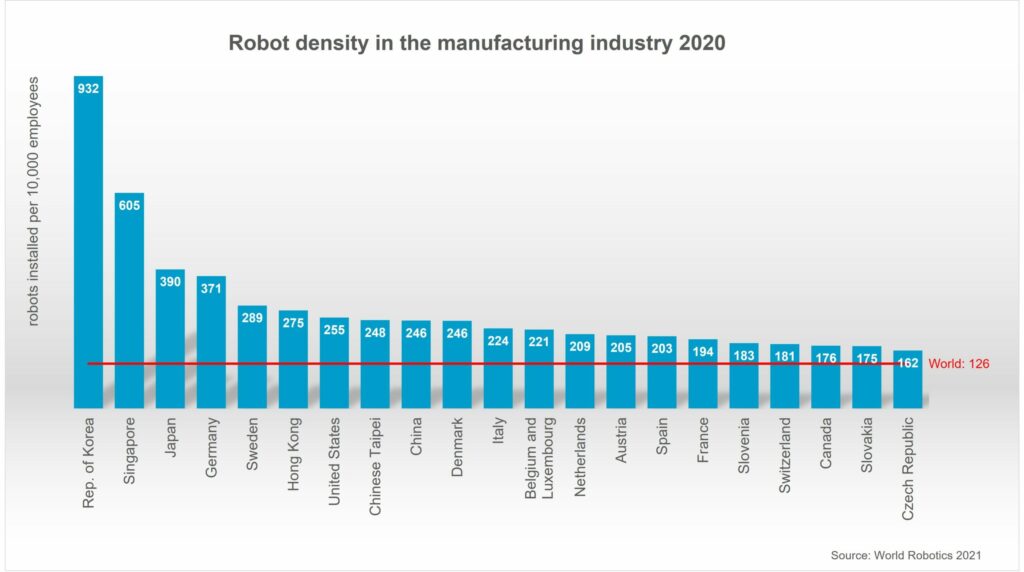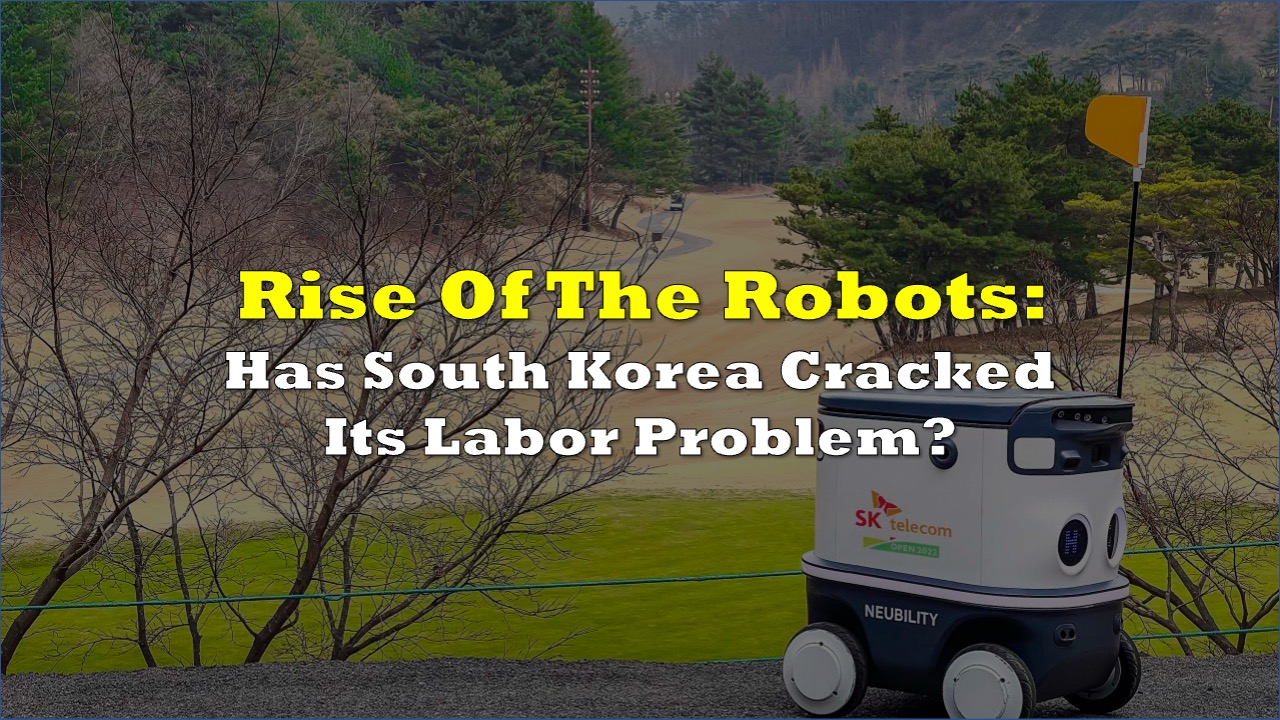How are South Korean corporations dealing with a labor shortage, a minimum wage hike, and the prospect of a shrinking workforce? With robots, obviously.
2021 data from World Robotics say that South Korea is the most robotized country in the world, with 932 robots for every 10,000 workers. The figure is seven times higher than the global density and is growing by 10% each year. At the time this data was collected, the top two sectors for industrial robotics in the country were electronics and automotives.

But these days, South Korea’s robots are rolling out in the open, doing more customer-facing work: making coffee, cooking tteokbokki, and running deliveries.
Nikkei reports that as labor costs rise, South Korea’s logistics and restaurant sectors are becoming the country’s leading industries in robot adoption. The minimum wage has doubled in the last decade and by 2023, it will go up to 9,620 won or $7.39 per hour.
Compared to other countries, the introduction of robots into South Korea’s workforce is a more welcome change, especially as recent data projects that with the declining birth rate, the country will lose half its 51 million population by the end of the century.
According to data from the International Federation of Robotics, the country’s service robot market will grow to an accumulative 230,000 units by 2025, with a value of 2.8 trillion won or $2.25 billion.
Information for this briefing was found via the sources and companies mentioned. The author has no securities or affiliations related to this organization. Not a recommendation to buy or sell. Always do additional research and consult a professional before purchasing a security. The author holds no licenses.









